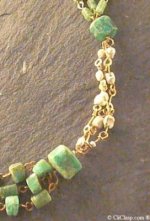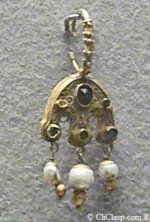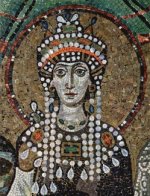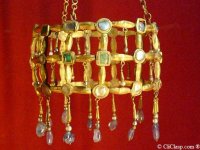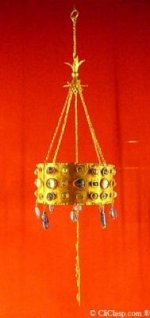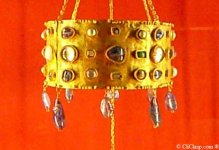So this one is :
- earring from Lombard art,
- VII century
- Gold, pearls, enamel and glass, sorry no stones
- from Campana collection as well (see Francesca 's comment above)
About Lombard, from Wikipedia:
The Kingdom of the Lombards Italy was an early medieval state on the north of Italian Peninsula. Formed by the invading german and scandinavian peoples in 568, it came under Frankish domination in 774 and its Lombard character gradually evaporated and it became the Kingdom of Italy.
Sure it shows Byzantin accents, you already pointed out how a style can be widespread,
there were already importation at Suse at II millenium BC !
Though the Lombards did not envaded Ravenne nearby, where mosaic with byzantin emperor and Theodora famous empress (she loved pearls, see pict.) can be shown in Basilique San Vitale de Ravenne.
You're right Douglas and nlerner: these people should have also brought their own style and pattern from northern countries mixed with local ones.
Who influenced who ?
Any additional comment welcome!

